Attached files
| file | filename |
|---|---|
| EX-99.2 - EX-99.2 - Revance Therapeutics, Inc. | d401201dex992.htm |
| 8-K - FORM 8-K - Revance Therapeutics, Inc. | d401201d8k.htm |
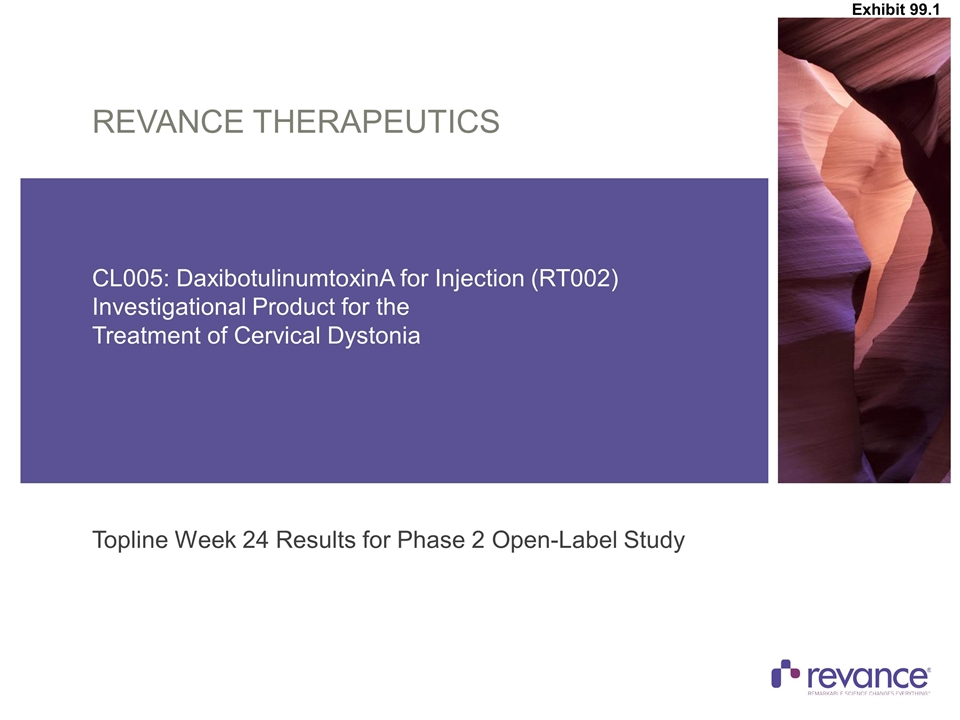
Revance TherapeutIcs CL005: DaxibotulinumtoxinA for Injection (RT002) Investigational Product for the Treatment of Cervical Dystonia Topline Week 24 Results for Phase 2 Open-Label Study Exhibit 99.1
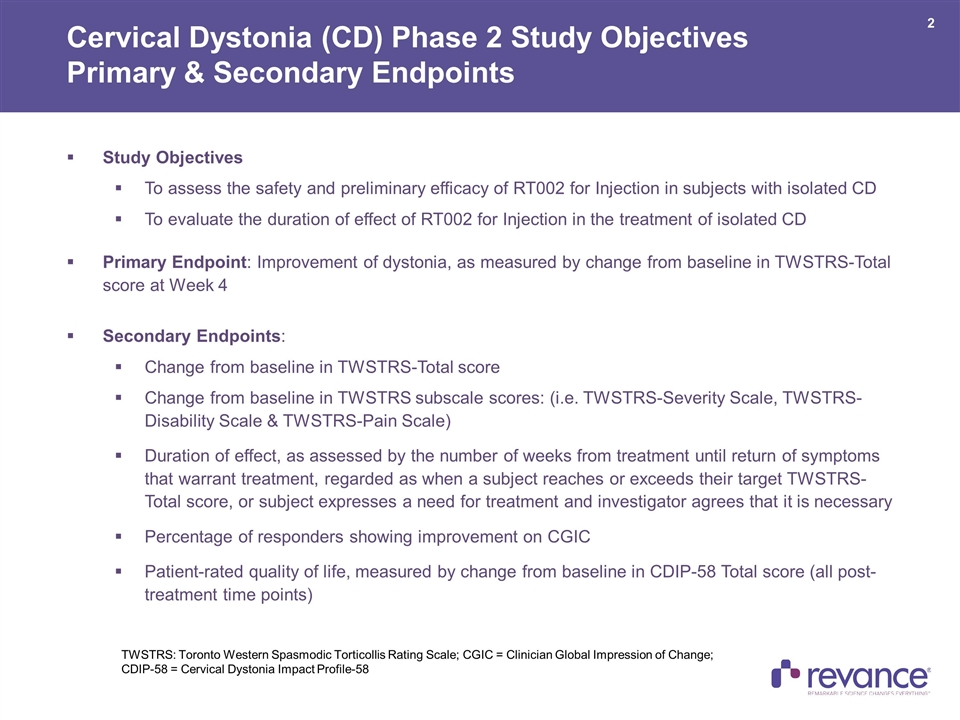
Study Objectives To assess the safety and preliminary efficacy of RT002 for Injection in subjects with isolated CD To evaluate the duration of effect of RT002 for Injection in the treatment of isolated CD Primary Endpoint: Improvement of dystonia, as measured by change from baseline in TWSTRS-Total score at Week 4 Secondary Endpoints: Change from baseline in TWSTRS-Total score Change from baseline in TWSTRS subscale scores: (i.e. TWSTRS-Severity Scale, TWSTRS-Disability Scale & TWSTRS-Pain Scale) Duration of effect, as assessed by the number of weeks from treatment until return of symptoms that warrant treatment, regarded as when a subject reaches or exceeds their target TWSTRS-Total score, or subject expresses a need for treatment and investigator agrees that it is necessary Percentage of responders showing improvement on CGIC Patient-rated quality of life, measured by change from baseline in CDIP-58 Total score (all post-treatment time points) Cervical Dystonia (CD) Phase 2 Study Objectives Primary & Secondary Endpoints TWSTRS: Toronto Western Spasmodic Torticollis Rating Scale; CGIC = Clinician Global Impression of Change; CDIP-58 = Cervical Dystonia Impact Profile-58
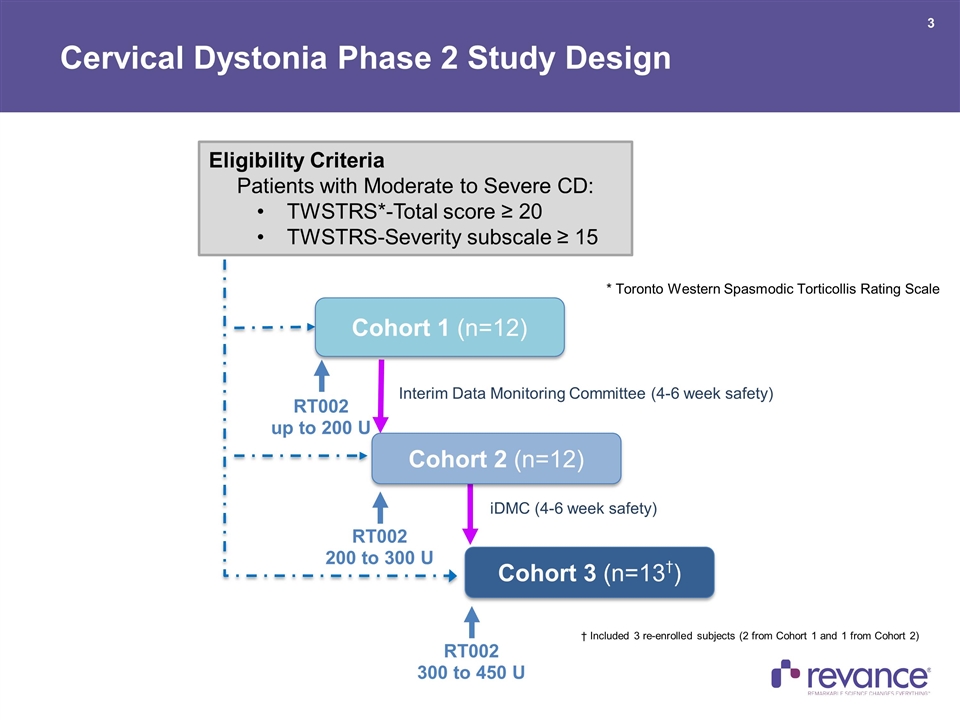
Cervical Dystonia Phase 2 Study Design RT002 up to 200 U iDMC (4-6 week safety) Interim Data Monitoring Committee (4-6 week safety) RT002 200 to 300 U RT002 300 to 450 U Eligibility Criteria Patients with Moderate to Severe CD: TWSTRS*-Total score ≥ 20 TWSTRS-Severity subscale ≥ 15 Cohort 1 (n=12) Cohort 2 (n=12) Cohort 3 (n=13†) * Toronto Western Spasmodic Torticollis Rating Scale † Included 3 re-enrolled subjects (2 from Cohort 1 and 1 from Cohort 2)
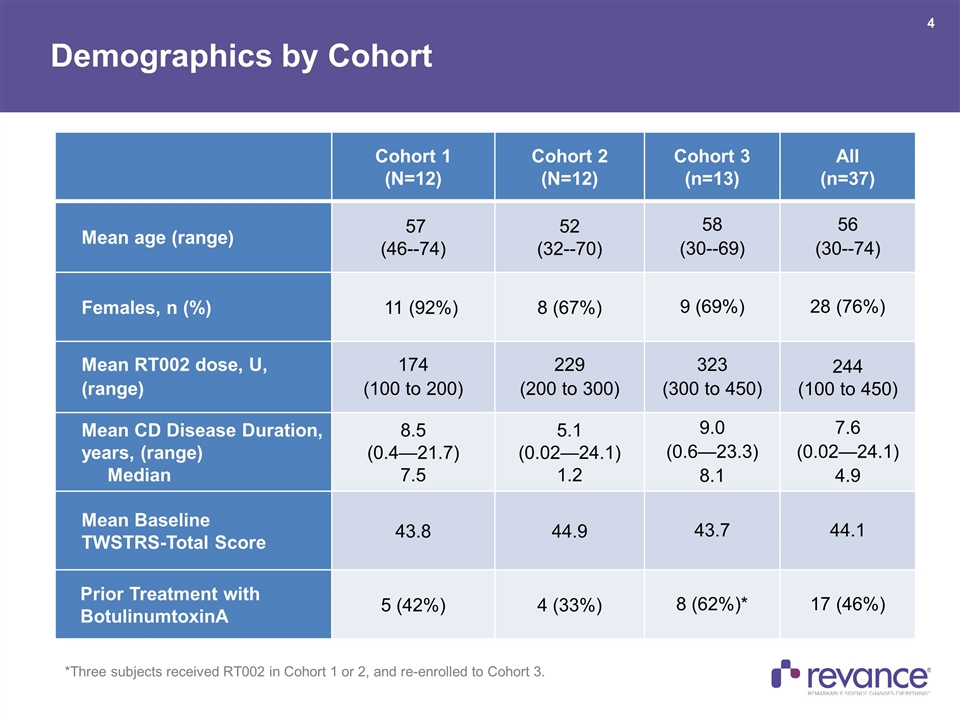
Demographics by Cohort Cohort 1 (N=12) Cohort 2 (N=12) Cohort 3 (n=13) All (n=37) Mean age (range) 57 (46--74) 52 (32--70) 58 (30--69) 56 (30--74) Females, n (%) 11 (92%) 8 (67%) 9 (69%) 28 (76%) Mean RT002 dose, U, (range) 174 (100 to 200) 229 (200 to 300) 323 (300 to 450) 244 (100 to 450) Mean CD Disease Duration, years, (range) Median 8.5 (0.4—21.7) 7.5 5.1 (0.02—24.1) 1.2 9.0 (0.6—23.3) 8.1 7.6 (0.02—24.1) 4.9 Mean Baseline TWSTRS-Total Score 43.8 44.9 43.7 44.1 Prior Treatment with BotulinumtoxinA 5 (42%) 4 (33%) 8 (62%)* 17 (46%) *Three subjects received RT002 in Cohort 1 or 2, and re-enrolled to Cohort 3.
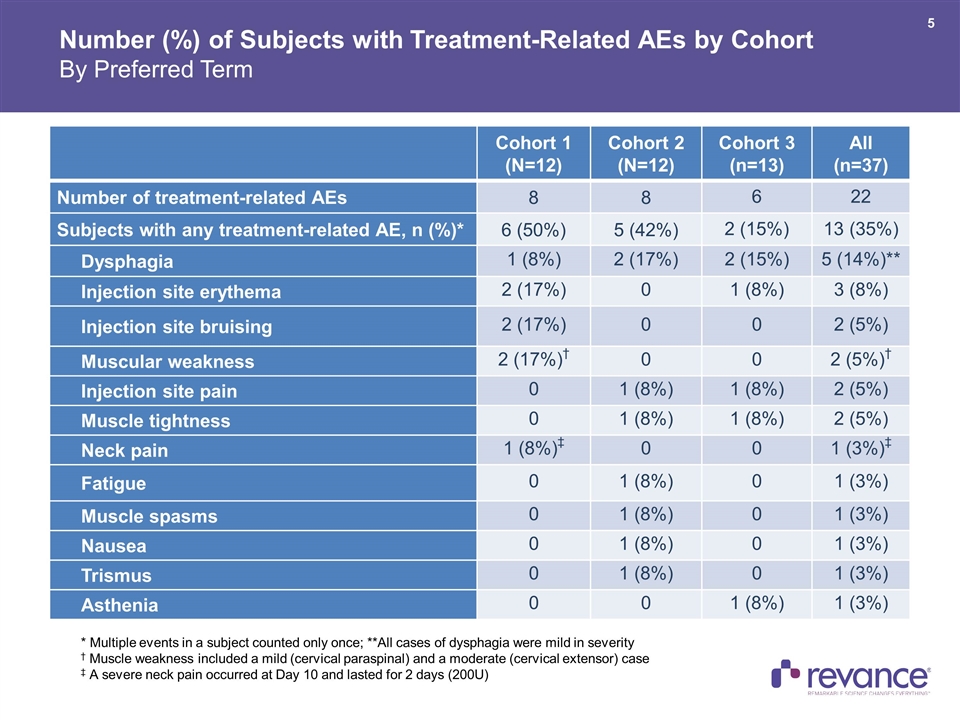
Number (%) of Subjects with Treatment-Related AEs by Cohort By Preferred Term Cohort 1 (N=12) Cohort 2 (N=12) Cohort 3 (n=13) All (n=37) Number of treatment-related AEs 8 8 6 22 Subjects with any treatment-related AE, n (%)* 6 (50%) 5 (42%) 2 (15%) 13 (35%) Dysphagia 1 (8%) 2 (17%) 2 (15%) 5 (14%)** Injection site erythema 2 (17%) 0 1 (8%) 3 (8%) Injection site bruising 2 (17%) 0 0 2 (5%) Muscular weakness 2 (17%)† 0 0 2 (5%)† Injection site pain 0 1 (8%) 1 (8%) 2 (5%) Muscle tightness 0 1 (8%) 1 (8%) 2 (5%) Neck pain 1 (8%)‡ 0 0 1 (3%)‡ Fatigue 0 1 (8%) 0 1 (3%) Muscle spasms 0 1 (8%) 0 1 (3%) Nausea 0 1 (8%) 0 1 (3%) Trismus 0 1 (8%) 0 1 (3%) Asthenia 0 0 1 (8%) 1 (3%) * Multiple events in a subject counted only once; **All cases of dysphagia were mild in severity † Muscle weakness included a mild (cervical paraspinal) and a moderate (cervical extensor) case ‡ A severe neck pain occurred at Day 10 and lasted for 2 days (200U)
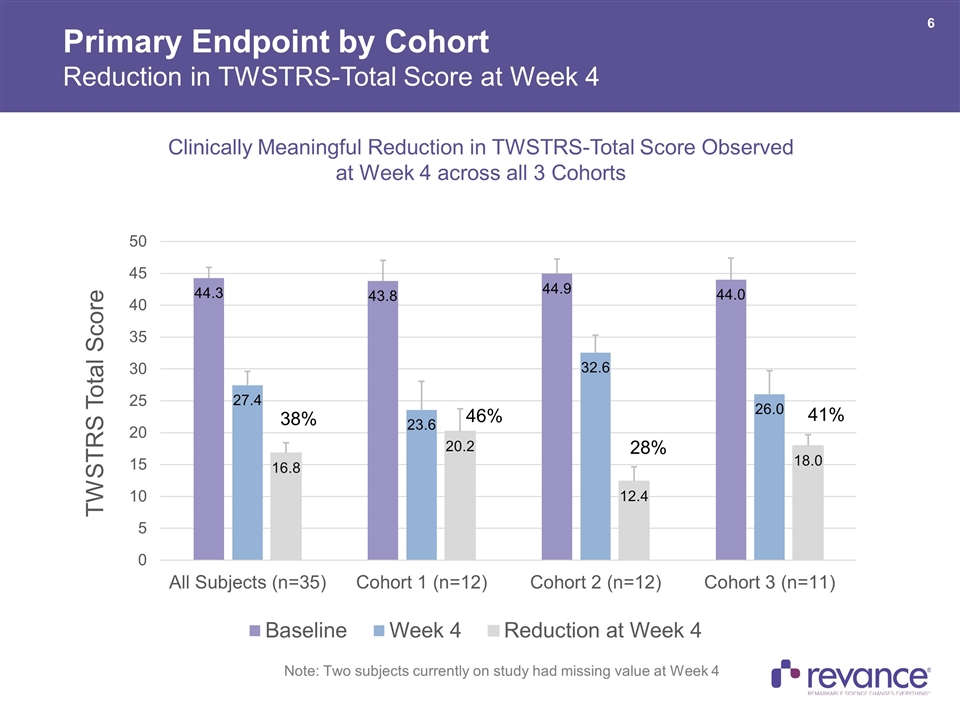
Primary Endpoint by Cohort Reduction in TWSTRS-Total Score at Week 4 Note: Two subjects currently on study had missing value at Week 4 38% 46% 28% 41% Clinically Meaningful Reduction in TWSTRS-Total Score Observed at Week 4 across all 3 Cohorts
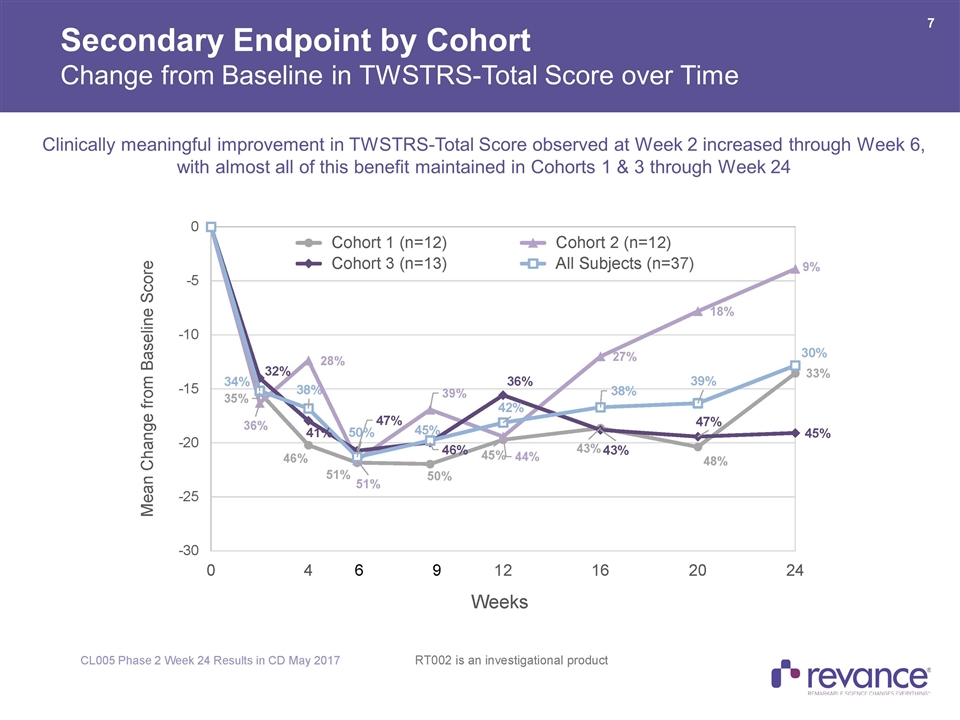
Secondary Endpoint by Cohort Change from Baseline in TWSTRS-Total Score over Time Clinically meaningful improvement in TWSTRS-Total Score observed at Week 2 increased through Week 6, with almost all of this benefit maintained in Cohorts 1 & 3 through Week 24
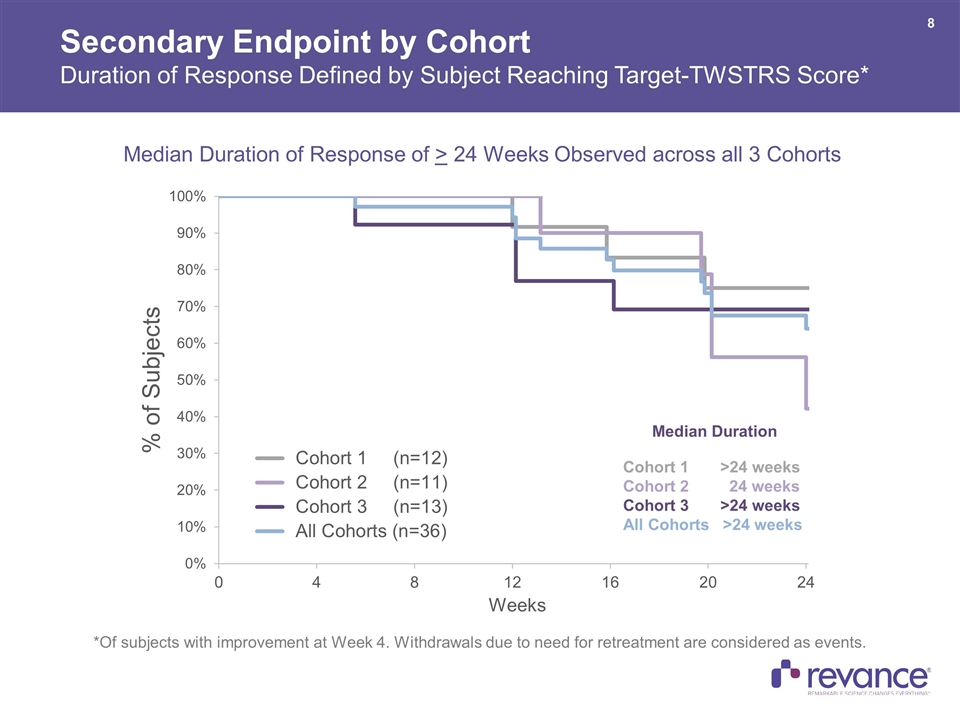
*Of subjects with improvement at Week 4. Withdrawals due to need for retreatment are considered as events. Secondary Endpoint by Cohort Duration of Response Defined by Subject Reaching Target-TWSTRS Score* Median Duration of Response of > 24 Weeks Observed across all 3 Cohorts Median Duration Cohort 1 >24 weeks Cohort 2 24 weeks Cohort 3 >24 weeks All Cohorts >24 weeks
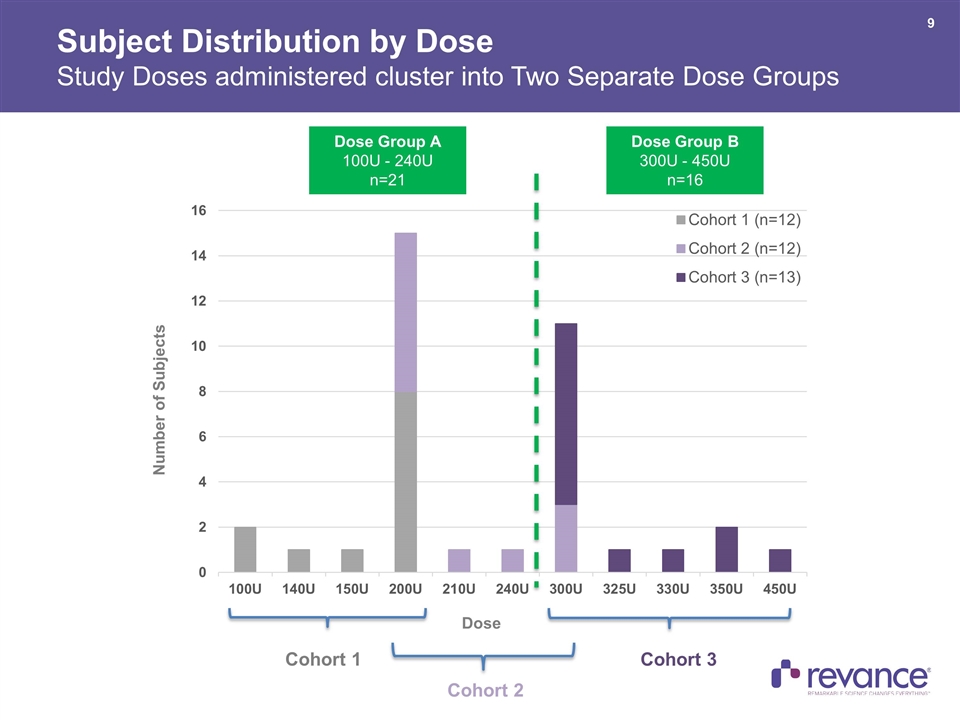
Subject Distribution by Dose Study Doses administered cluster into Two Separate Dose Groups Dose Group A 100U - 240U n=21 Dose Group B 300U - 450U n=16 Cohort 1 Cohort 2 Cohort 3 Number of Subjects Dose
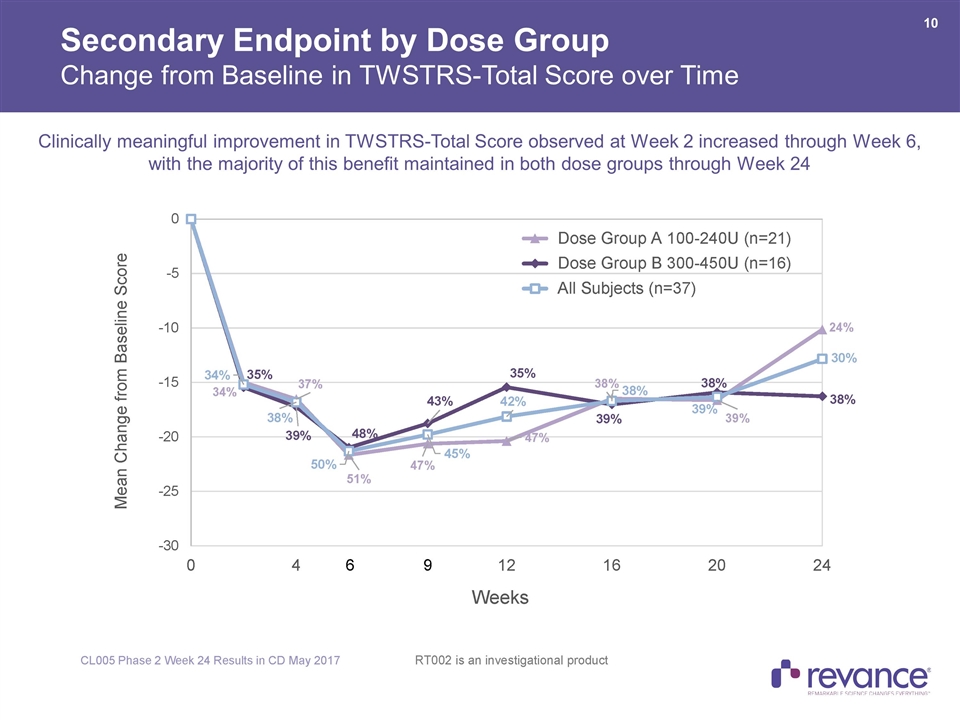
Secondary Endpoint by Dose Group Change from Baseline in TWSTRS-Total Score over Time Clinically meaningful improvement in TWSTRS-Total Score observed at Week 2 increased through Week 6, with the majority of this benefit maintained in both dose groups through Week 24
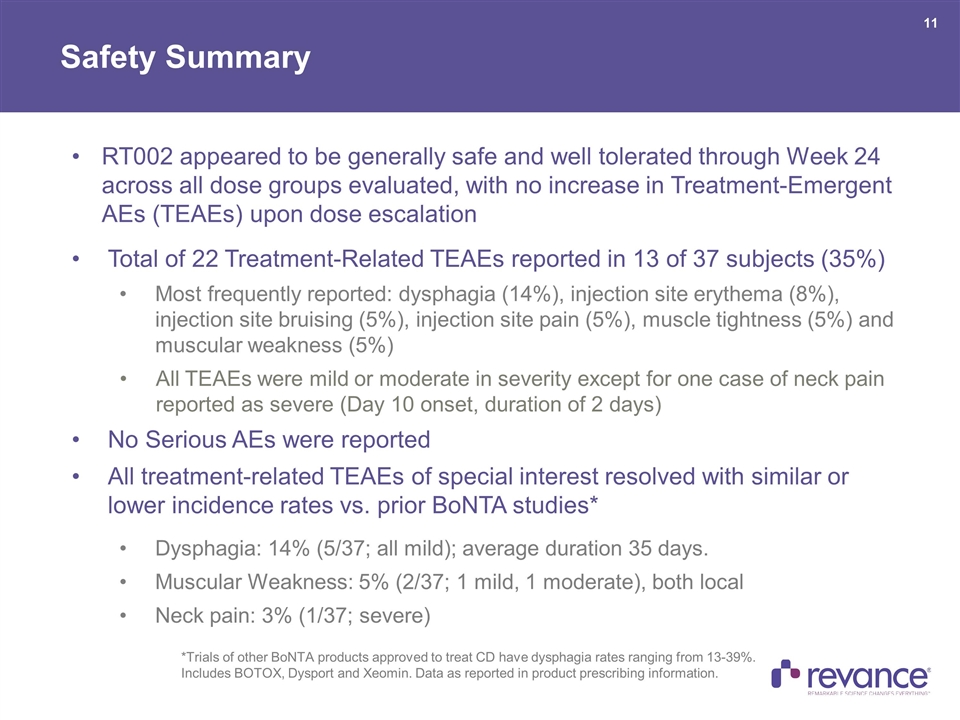
Safety Summary RT002 appeared to be generally safe and well tolerated through Week 24 across all dose groups evaluated, with no increase in Treatment-Emergent AEs (TEAEs) upon dose escalation Total of 22 Treatment-Related TEAEs reported in 13 of 37 subjects (35%) Most frequently reported: dysphagia (14%), injection site erythema (8%), injection site bruising (5%), injection site pain (5%), muscle tightness (5%) and muscular weakness (5%) All TEAEs were mild or moderate in severity except for one case of neck pain reported as severe (Day 10 onset, duration of 2 days) No Serious AEs were reported All treatment-related TEAEs of special interest resolved with similar or lower incidence rates vs. prior BoNTA studies* Dysphagia: 14% (5/37; all mild); average duration 35 days. Muscular Weakness: 5% (2/37; 1 mild, 1 moderate), both local Neck pain: 3% (1/37; severe) *Trials of other BoNTA products approved to treat CD have dysphagia rates ranging from 13-39%. Includes BOTOX, Dysport and Xeomin. Data as reported in product prescribing information.
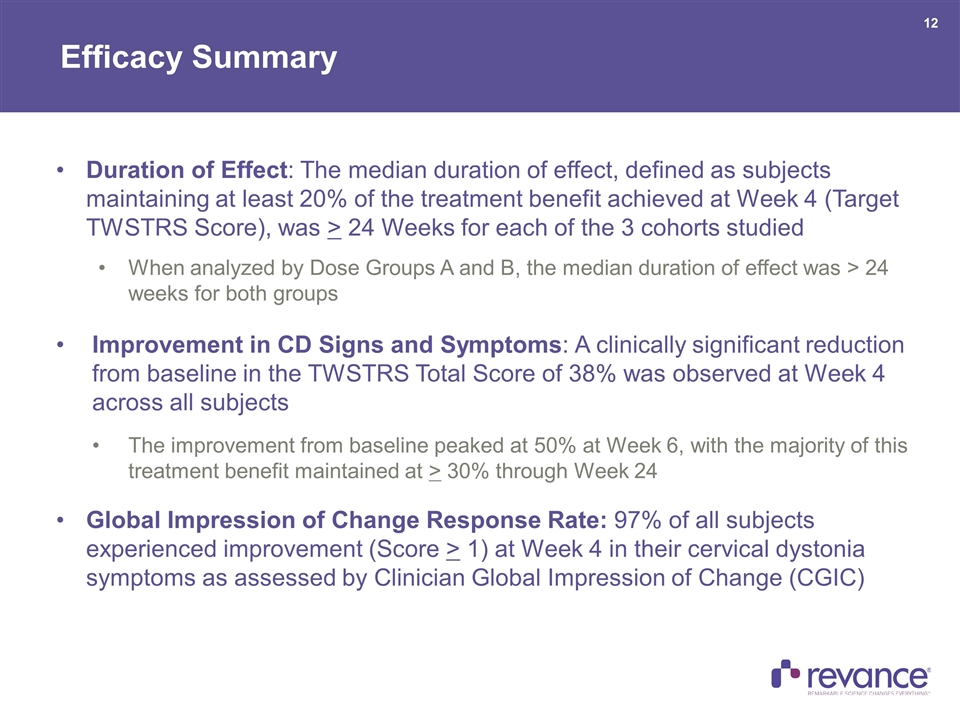
Efficacy Summary Duration of Effect: The median duration of effect, defined as subjects maintaining at least 20% of the treatment benefit achieved at Week 4 (Target TWSTRS Score), was > 24 Weeks for each of the 3 cohorts studied When analyzed by Dose Groups A and B, the median duration of effect was > 24 weeks for both groups Improvement in CD Signs and Symptoms: A clinically significant reduction from baseline in the TWSTRS Total Score of 38% was observed at Week 4 across all subjects The improvement from baseline peaked at 50% at Week 6, with the majority of this treatment benefit maintained at > 30% through Week 24 Global Impression of Change Response Rate: 97% of all subjects experienced improvement (Score > 1) at Week 4 in their cervical dystonia symptoms as assessed by Clinician Global Impression of Change (CGIC)
